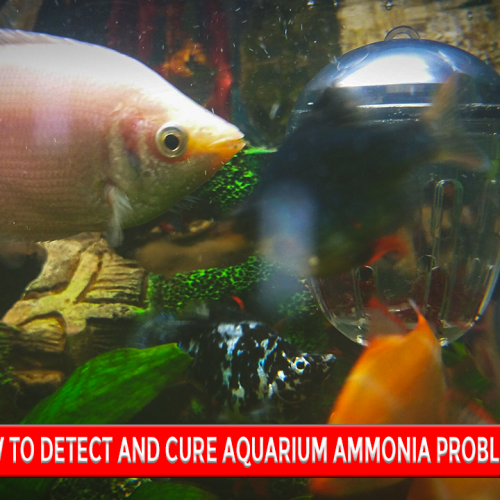Eco-Friendly Fish Tank Decorations:
Not only does decorating a fish tank make it lovelier, but the inhabitants can feel comfortable and enriched within their environment. Still, many of the traditional aquarium decorations come with harmful chemicals, nonbiodegradable materials, or unethical sources. Sustainable aquascaping brings together aesthetics with responsibility by focusing on eco-friendly materials and mindful sourcing. Here’s a guide to making your tank not just appealing to the eye but also environmentally friendly.
1. Why Choose Ecological Decorations?
 A sustainable aquarium has many benefits: improved water quality, reduced environmental impact, and a very natural look that takes you closer to bringing the authenticity of your fish’s natural habitats to your very eyes.
A sustainable aquarium has many benefits: improved water quality, reduced environmental impact, and a very natural look that takes you closer to bringing the authenticity of your fish’s natural habitats to your very eyes.
- Healthier Water Quality: Organic, chemical-free decorations maintain cleanliness of the water and promote healthy growth in your fish.
- Lower Environmental Impact: Eco-friendly alternatives are helping minimize plastic waste and reduce overharvesting of natural products.
- Unique Aesthetics: Natural materials create an authentic look and feel by mirroring the natural habitats of your fish, thus enriching their environment.
2. Sustainably Stylish Choices
Driftwood and Rocks
To add dimension and texture, you should incorporate some sustainably sourced driftwood and rocks that allow fish to hide and play. When choosing driftwood, ensure you avoid pieces that have been chemically treated or dyed. Rather, opt for lava rocks, slate, and other aquarium-safe stones that do not affect your water quality.
Live Plants
Live plants are the heart of green tanks. They give off oxygen and provide an ecological balance in the water. The live plants also consume nitrates and other chemicals within the water. Select species like Java Fern, Anubias, and Amazon Sword as examples, as they can be highly resilient, relatively tolerant, and thrive in the majority of conditions with minimal care.
Ceramic and Natural Stone Decorations
For your tank decor, go for the natural ceramic or stones since they contain no harmful chemicals and won’t break down in water. Even decorative caves and tunnels made of natural clay or responsible sources of stones create a fun hiding space for your fish.
Bamboo and Coconut Shells
Bamboo stalks and coconut shells are biodegradable and add some nice looks to the tank. For example, coconut shells create miniature caves. Tall organic backdrop is made of bamboo. Wood or plant material not treated with chemicals should avoid it since it will leach the awful stuff into the water.
3. Avoid Plastics and Non-Biodegradable Residues
Plastic decoration: easy to find, but most plastic decoration materials and items are worse than their natural products. They possess dyes and chemicals that can break off in the water and cause great danger to your fish. In fact, even though some plastics are officially permitted to use within an aquarium, still, keep your distance from plastics and choose such eco-friendly, natural materials as will encourage better health of the ecosystem
4. DIY Eco-Friendly Aquarium Decoration
If you enjoy DIY, you can work on creating decorations from natural, untreated wood or rocks. You may find driftwood pieces and stones next to lakes and beaches; however, ensure they are cleaned and treated gently before adding them to your aquarium. DIY projects allow you to create tailored features while having control over the safety of the material used.
5. Maintaining a Balanced Ecosystem
When choosing low-impact ornaments, try making an ecosystem that can survive on its own. For instance:
- Plant Use for Filtration: Plant such as Java Moss or Duckweed can be used in the natural filtration process, thereby reducing the use of chemical additives.
- Natural Lighting: Placing your tank in an area with indirect sunlight is the best. If indirect sunlight is not possible, then eco-friendly energy efficient LED lights would work like magic
6. Eco-friendly Substrate Options
The choice of substrate also has environmental impacts. Opt for substrate like sand, gravel, or soil specifically designed for aquarium use and is free from synthetic coatings or dyes. Eco-friendly substrates encourage beneficial plant growth and may provide natural filtration as well.
Summary
Sustainable aquascaping gives an opportunity to develop an aesthetically pleasing, healthy aquarium that affects the environment to a minimum. From natural products derived from the natural environment with responsible sourcing, you are improving your fish’s habitat and supporting responsible and considerate practices. An aquascape with mature plants, good quality natural rocks, and biodegradable decoration would be beautiful and express a will toward ensuring the welfare of your fish and the planet.
FAQs (frequently-asked questions)
Some live plants require a moderate amount of care, but some like beautiful Anubias and Java Fern are low-maintenance and the ideal candidate for newbie beginning.
Yes, clean properly and cure them first to avoid any potential harmful bacteria or pollutant. We also always check local laws that prohibit collecting.
The substrates in the form of soil are excellent for plant growth and perfect for one who wants a low maintenance setup. Sand and gravel would be just fine too.
Over time, it may give off harmful chemicals into the water, thus harming the fish. Not to mention adding to all that plastic waste in our environment; therefore, natural ones are way better and don’t risk bad times for mother earth.




